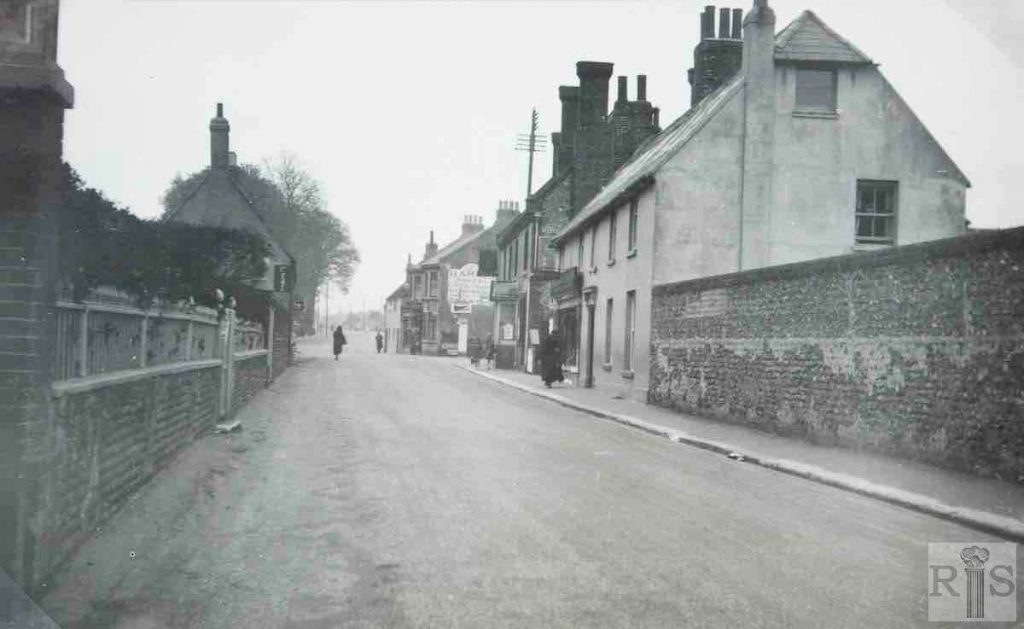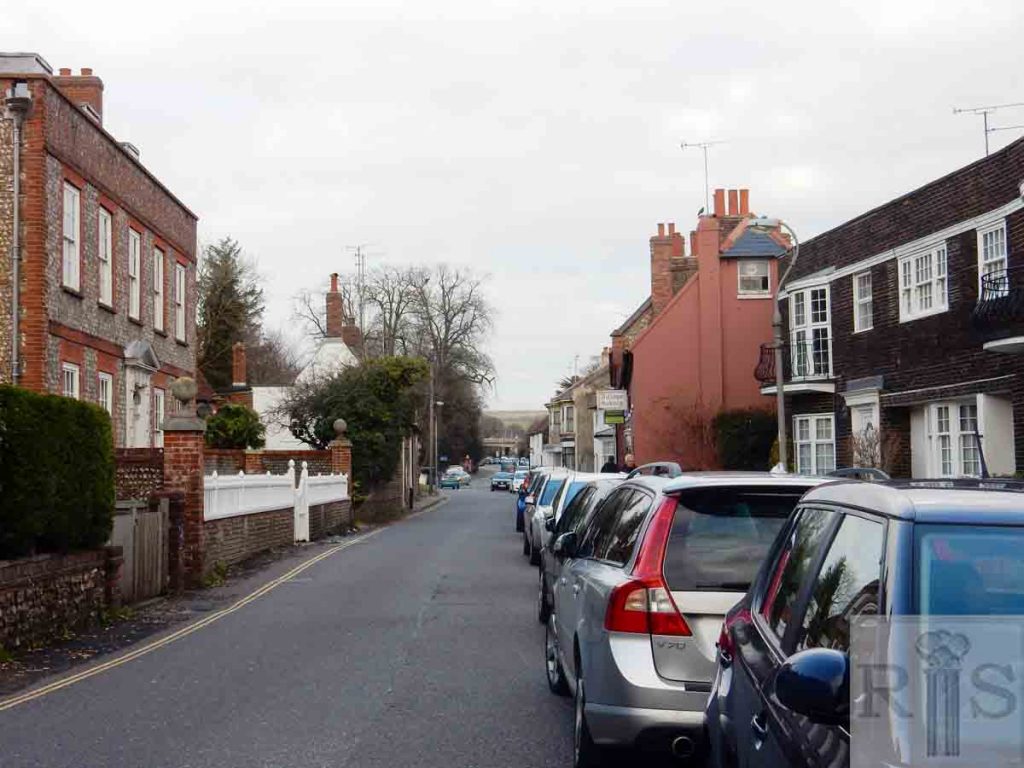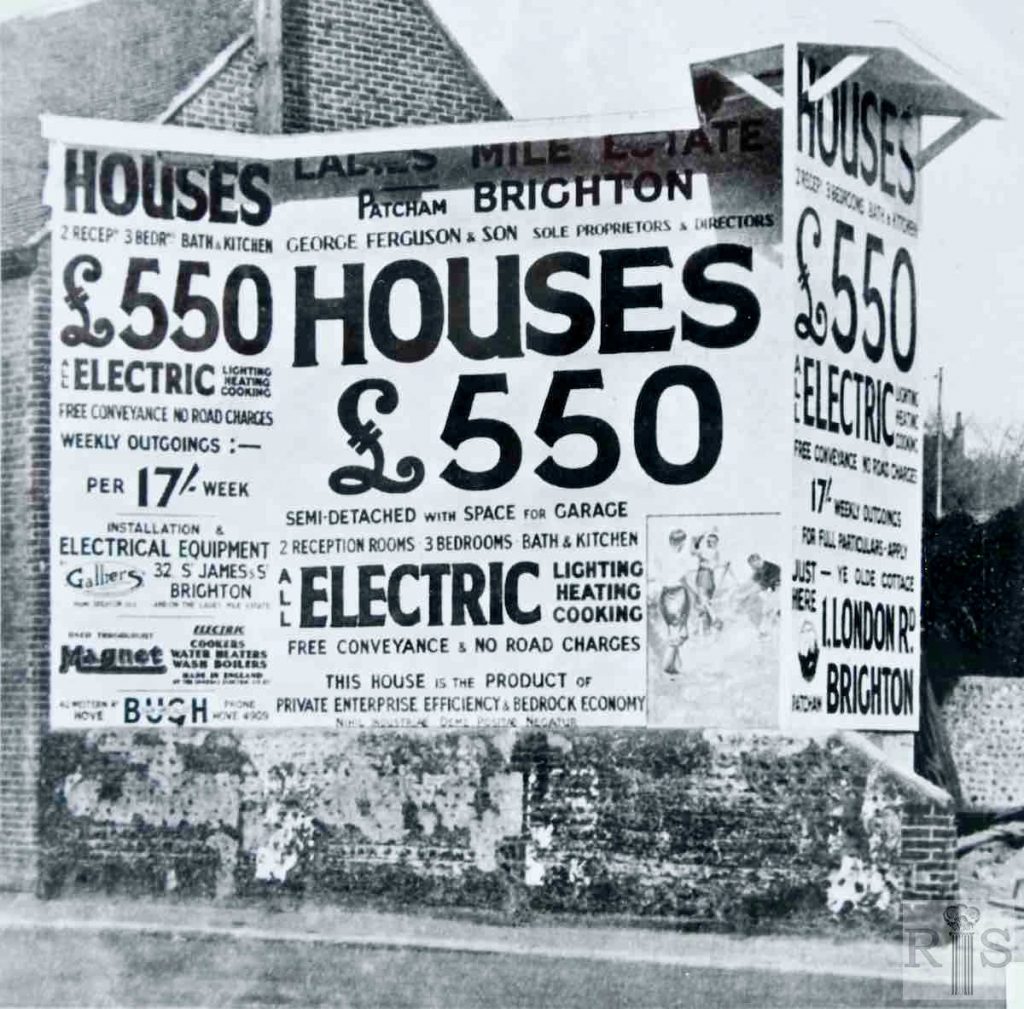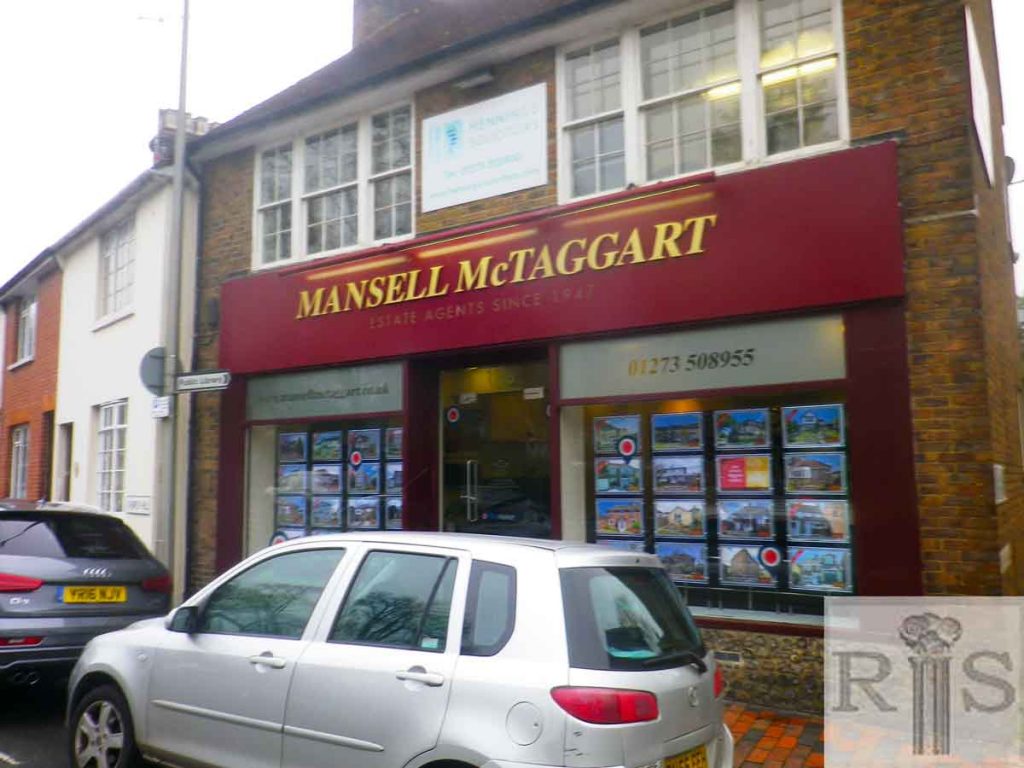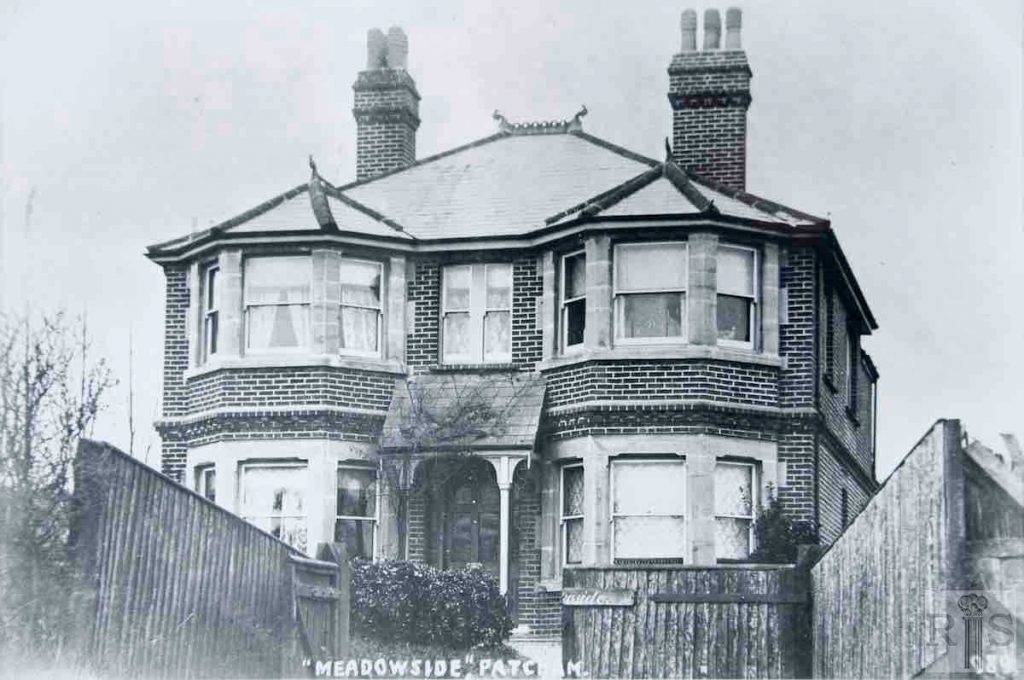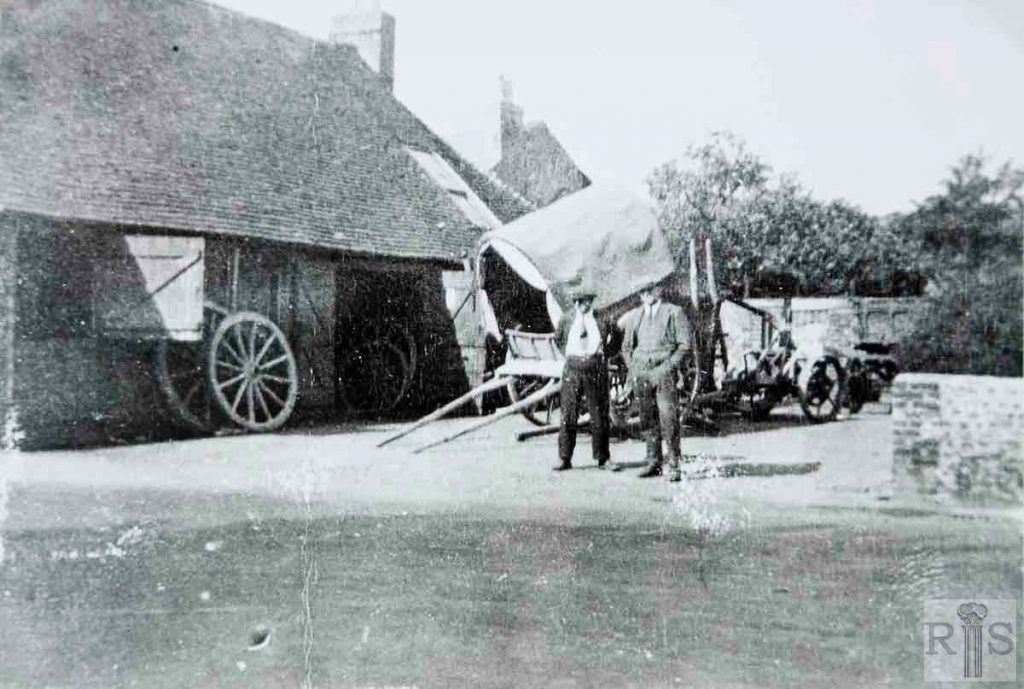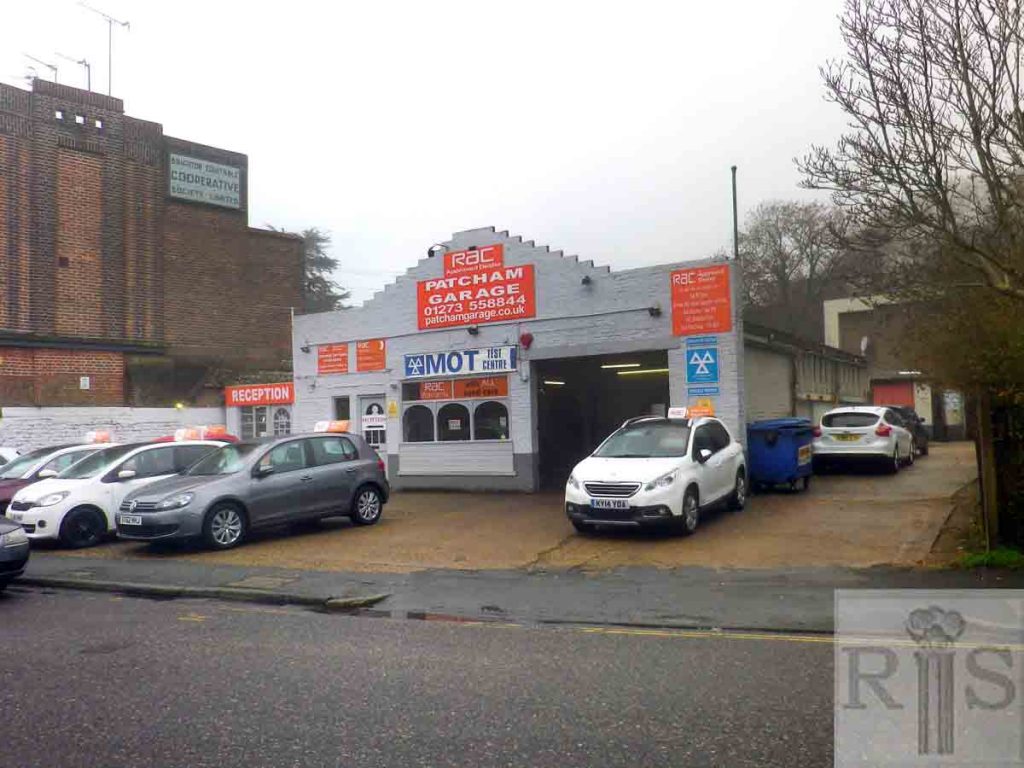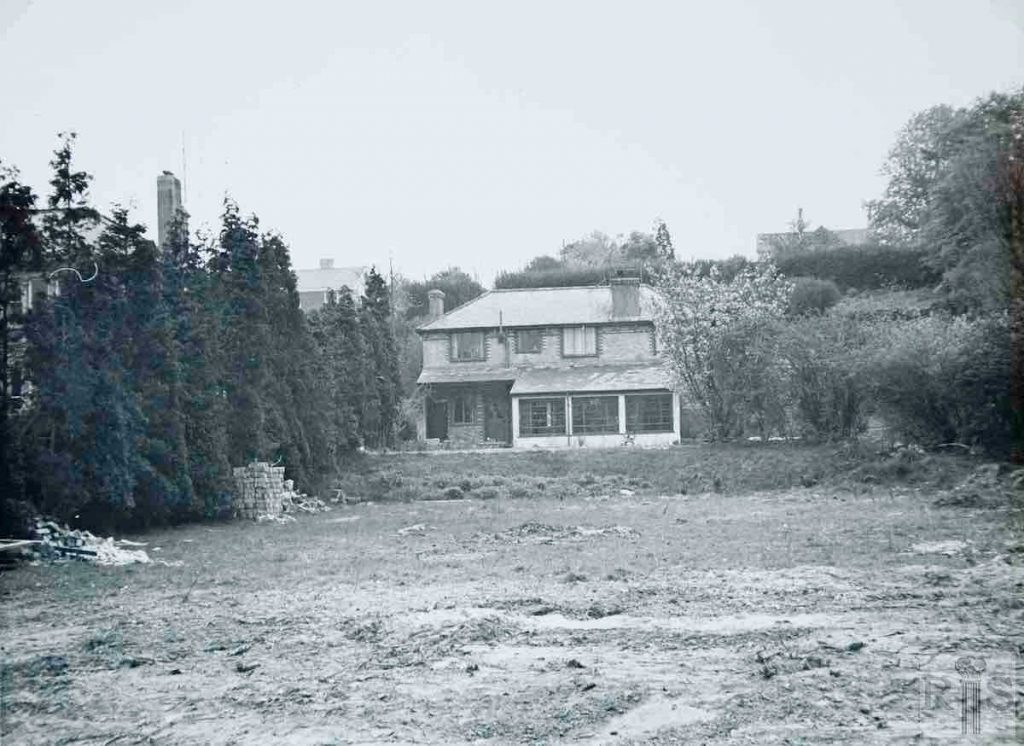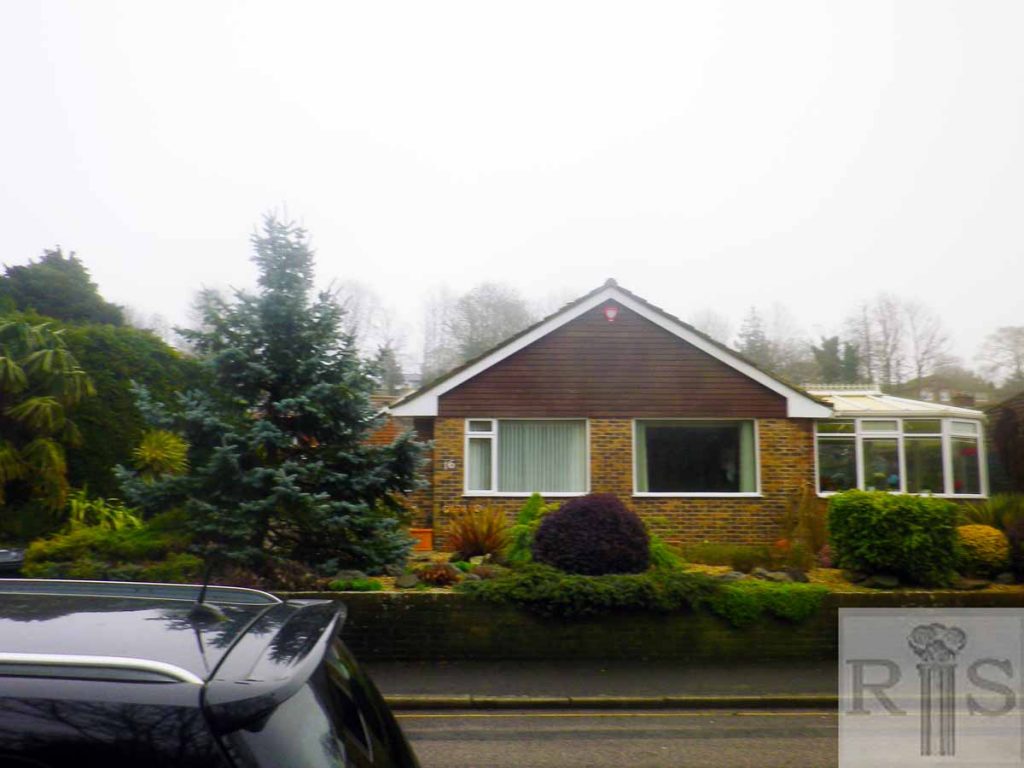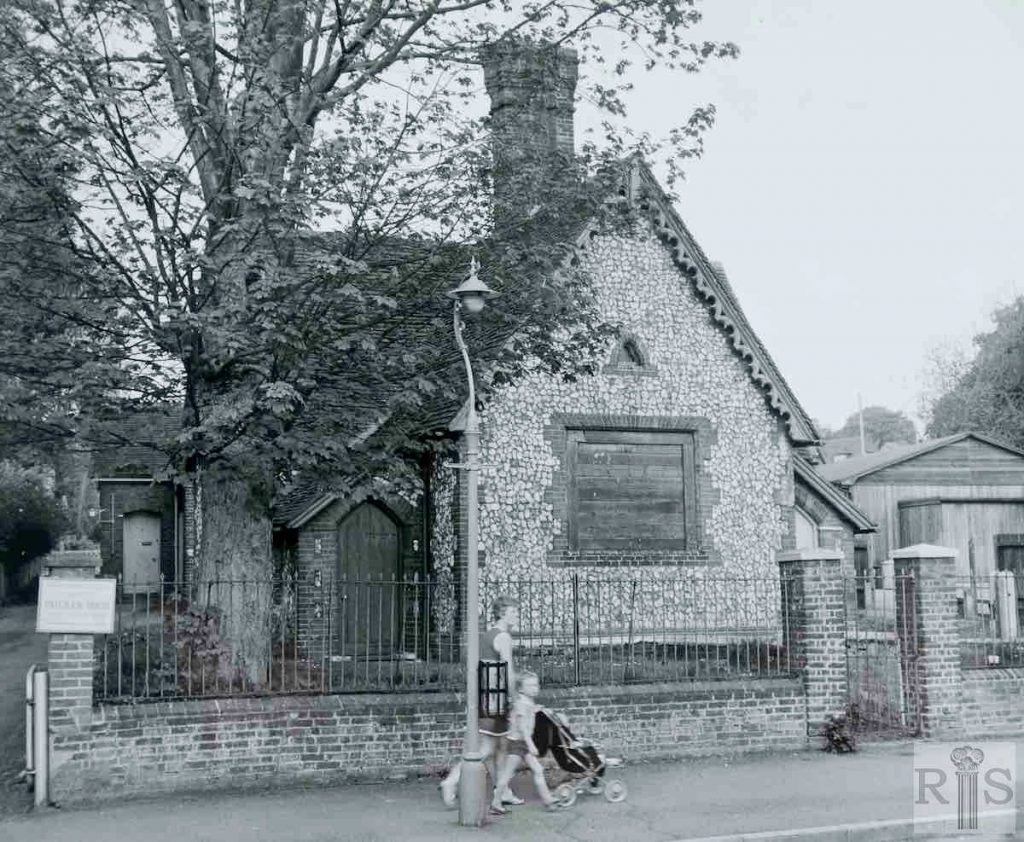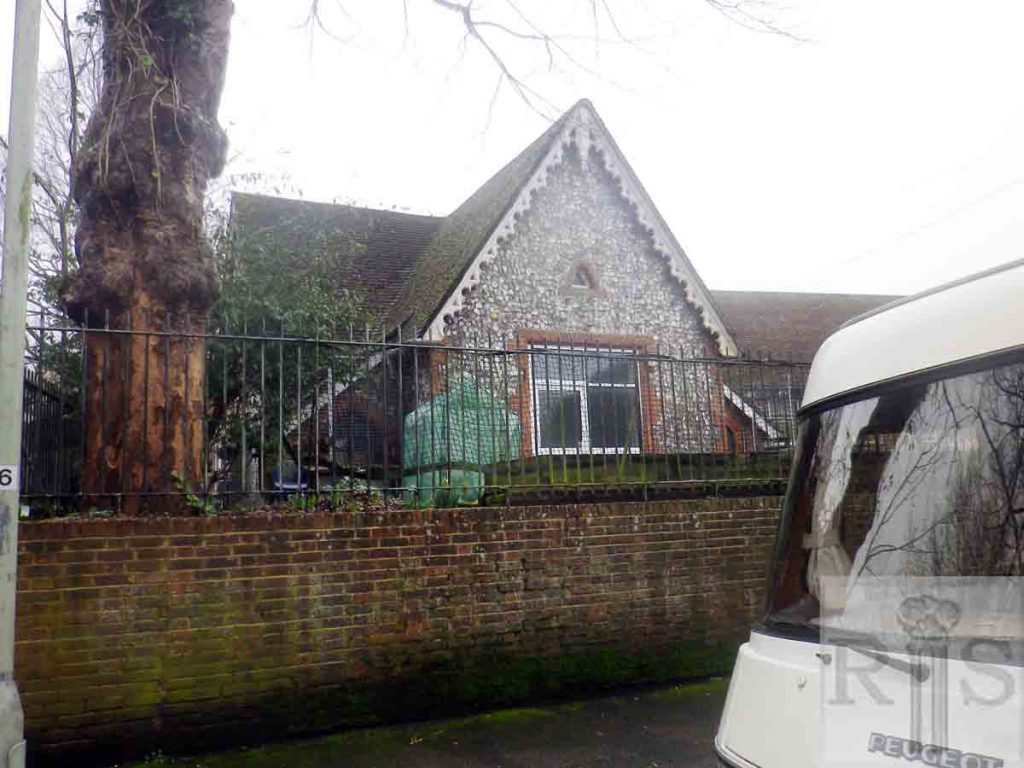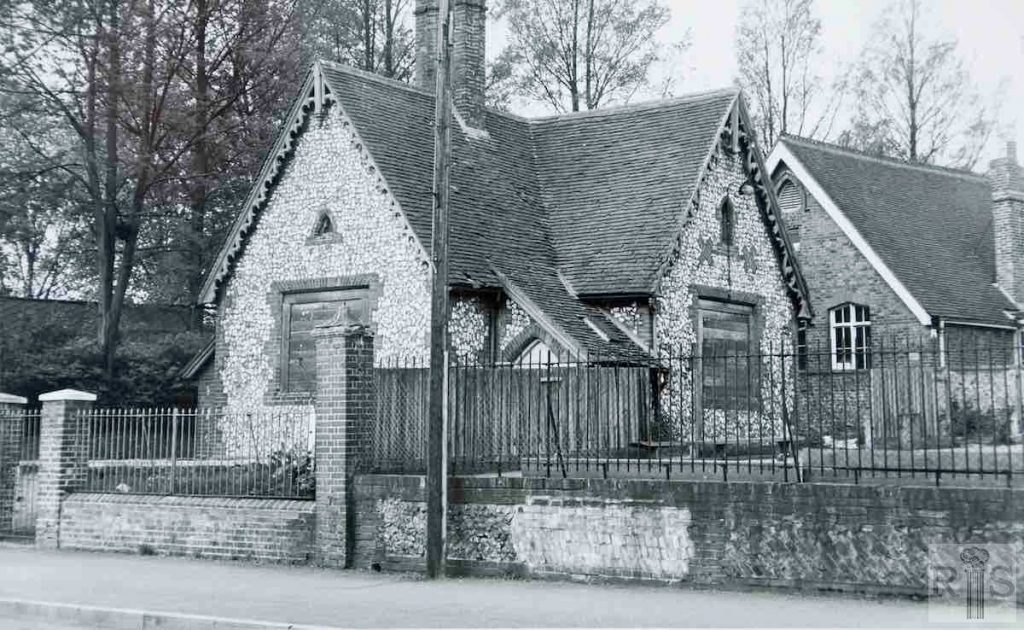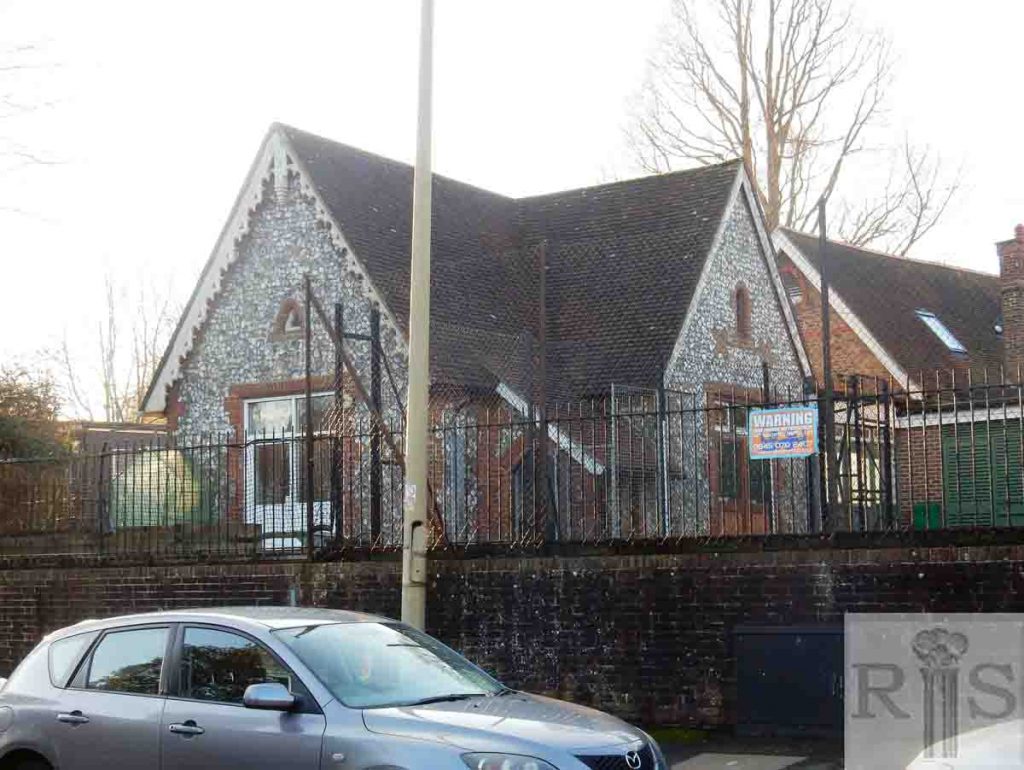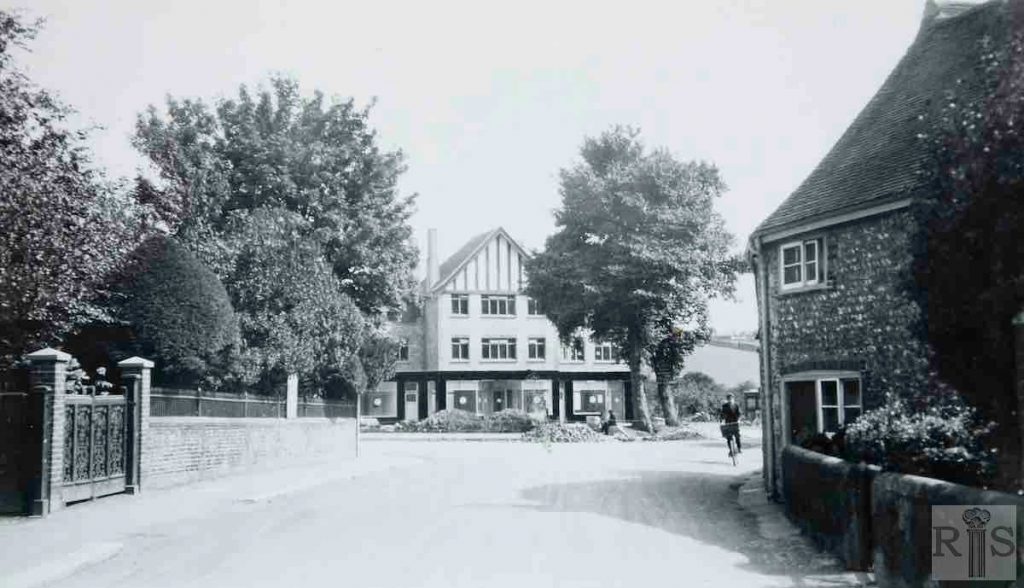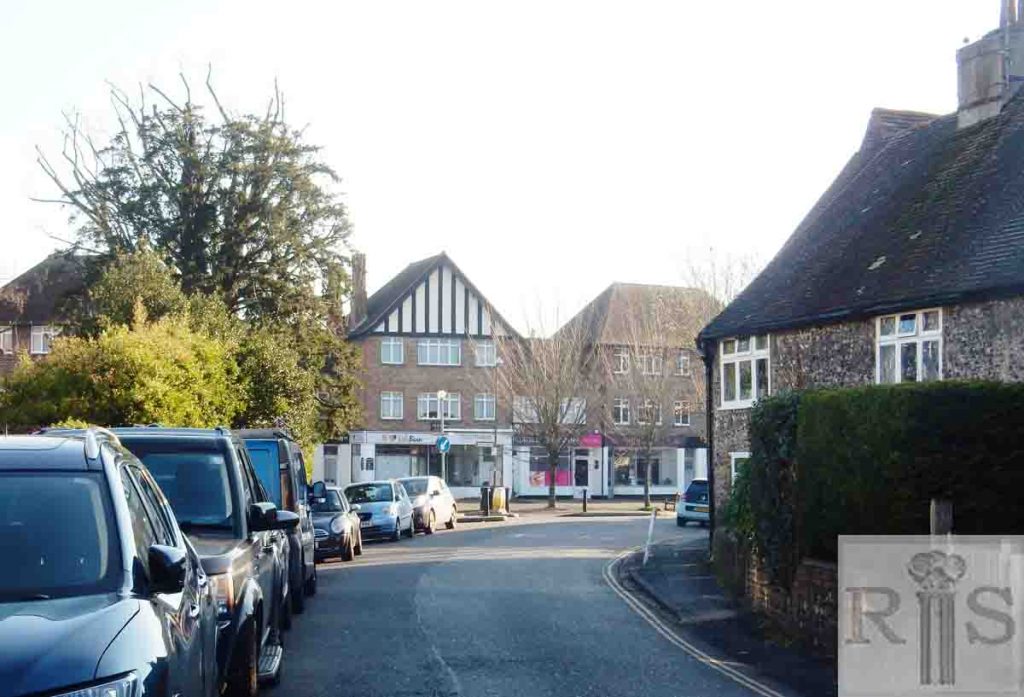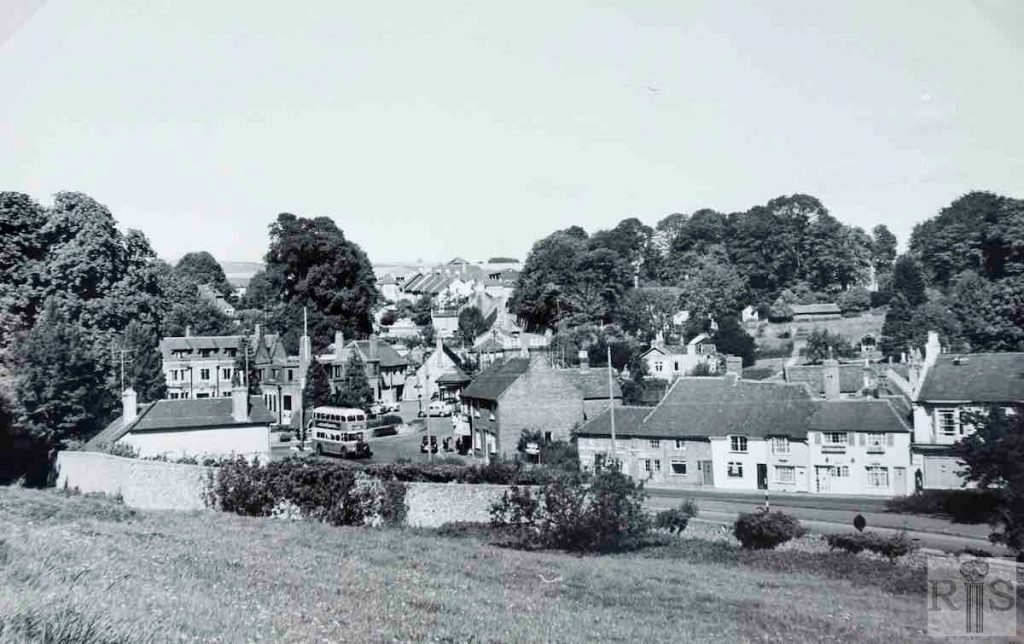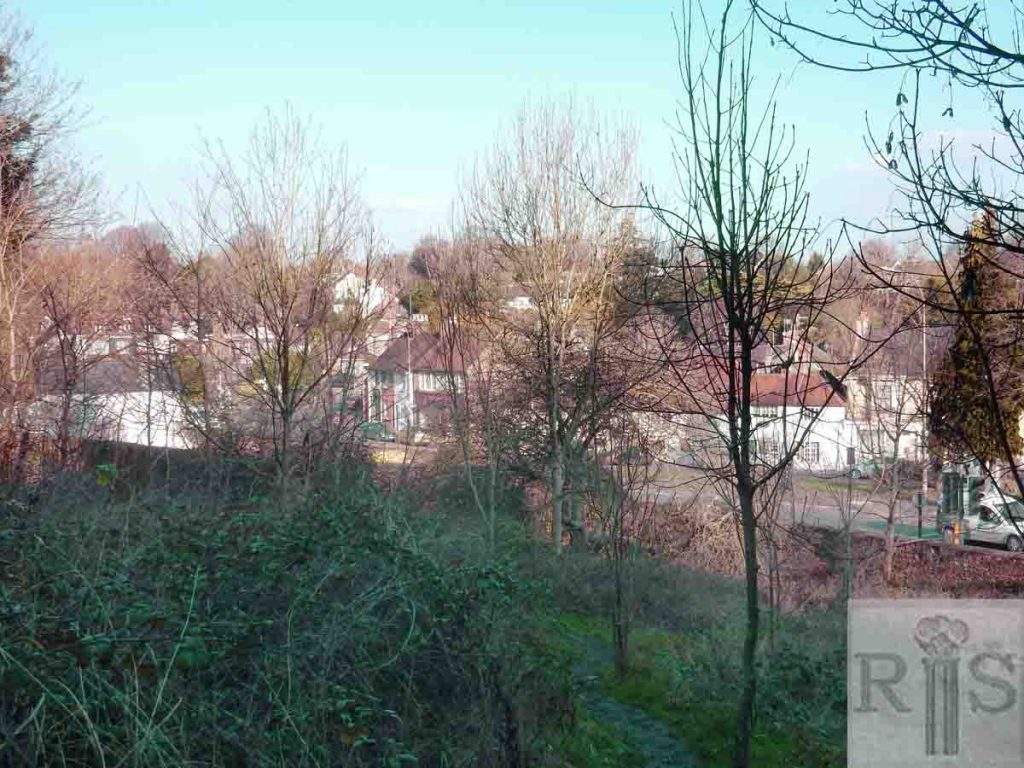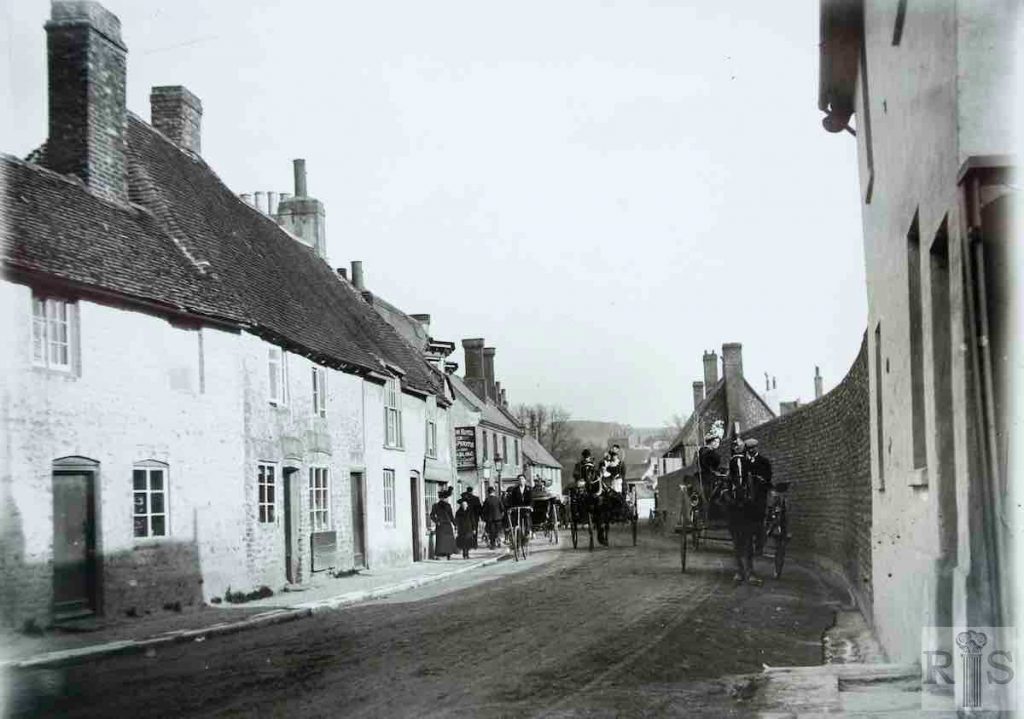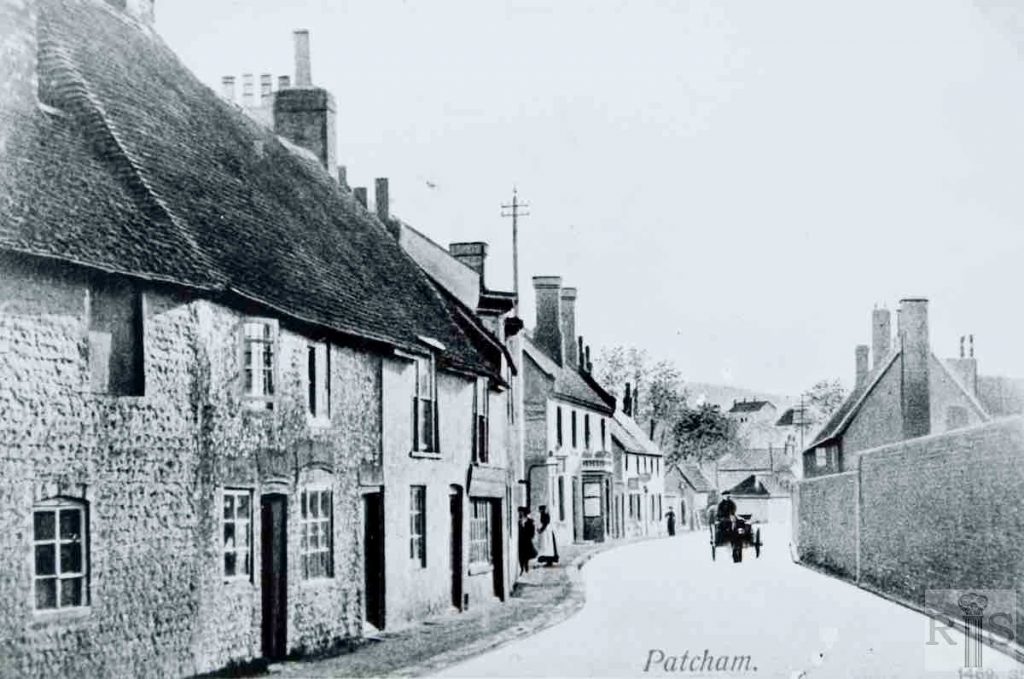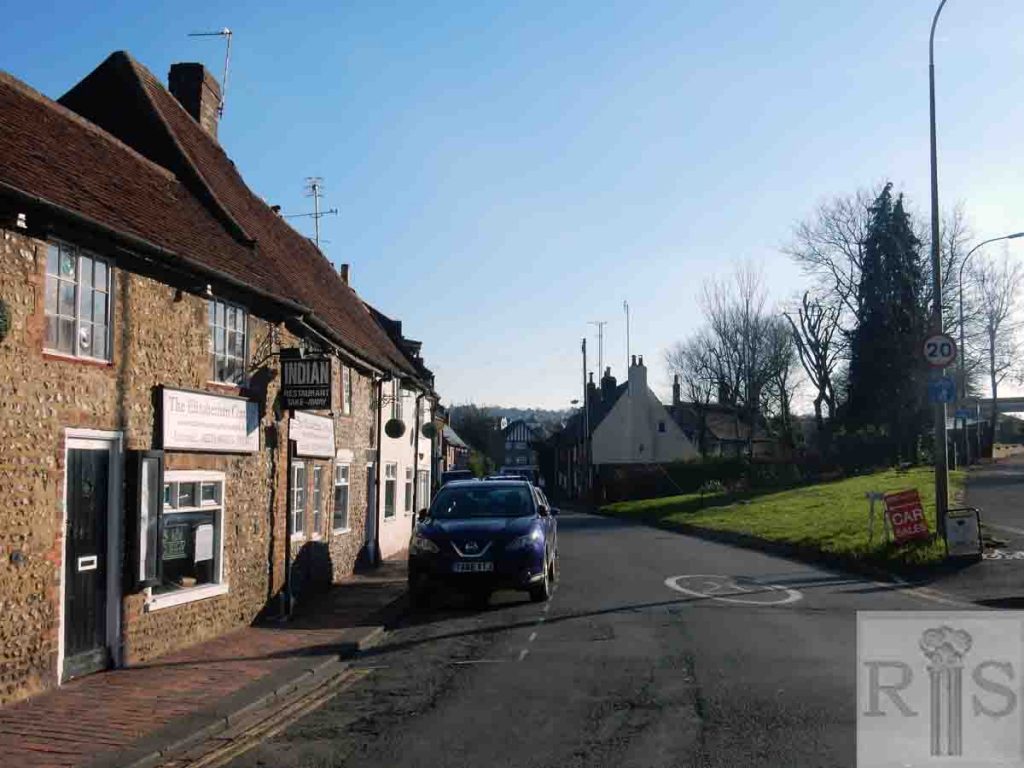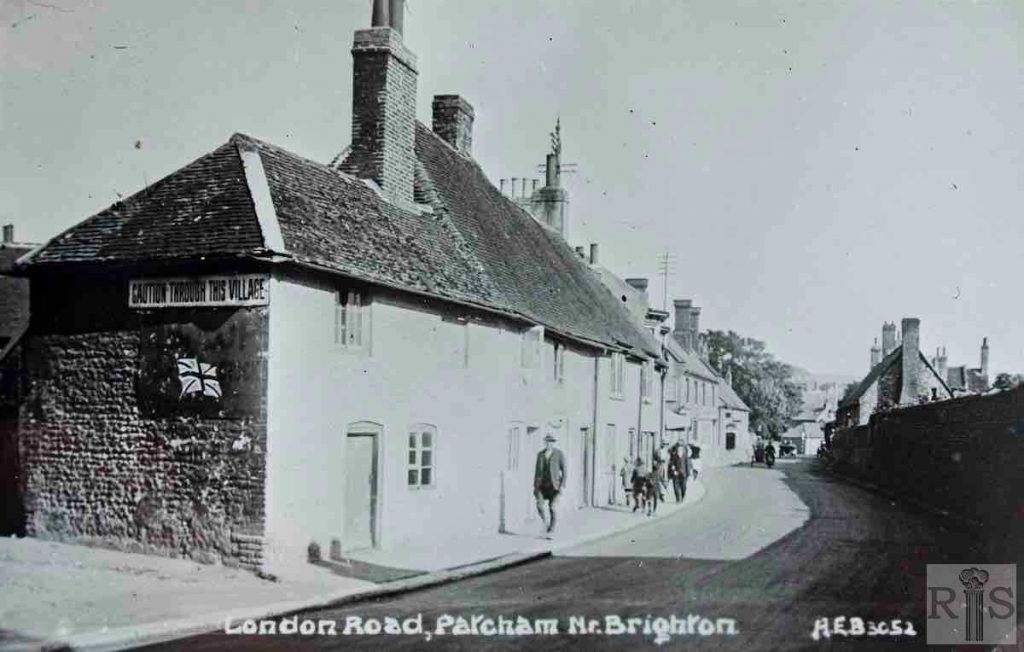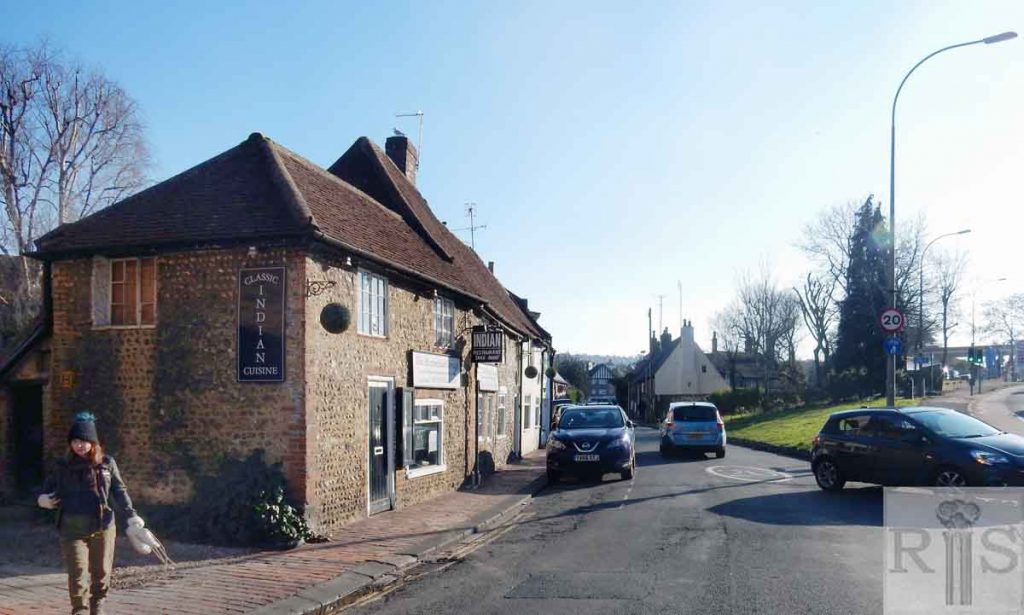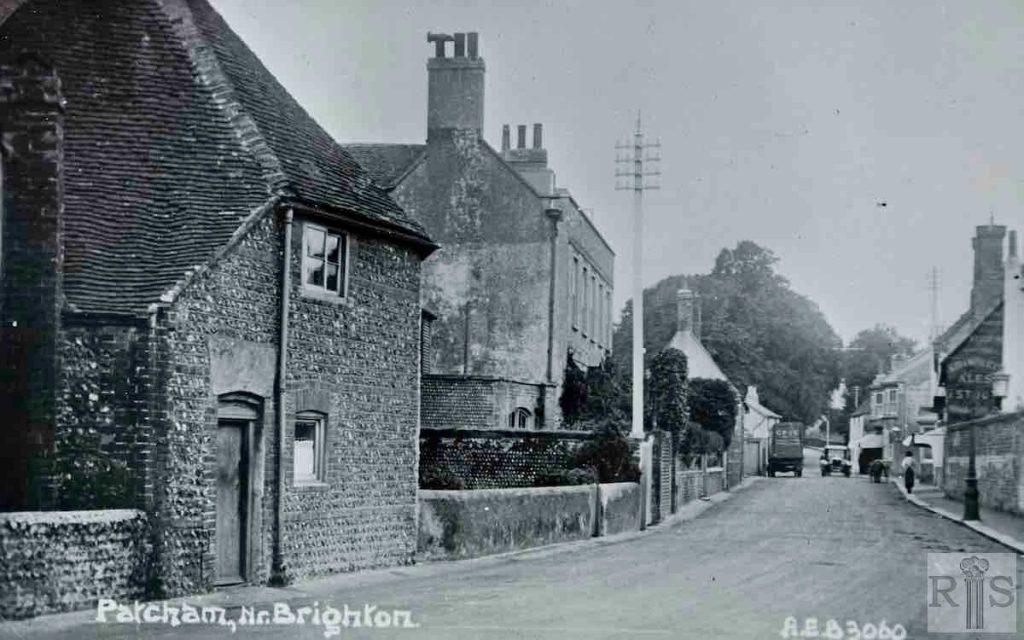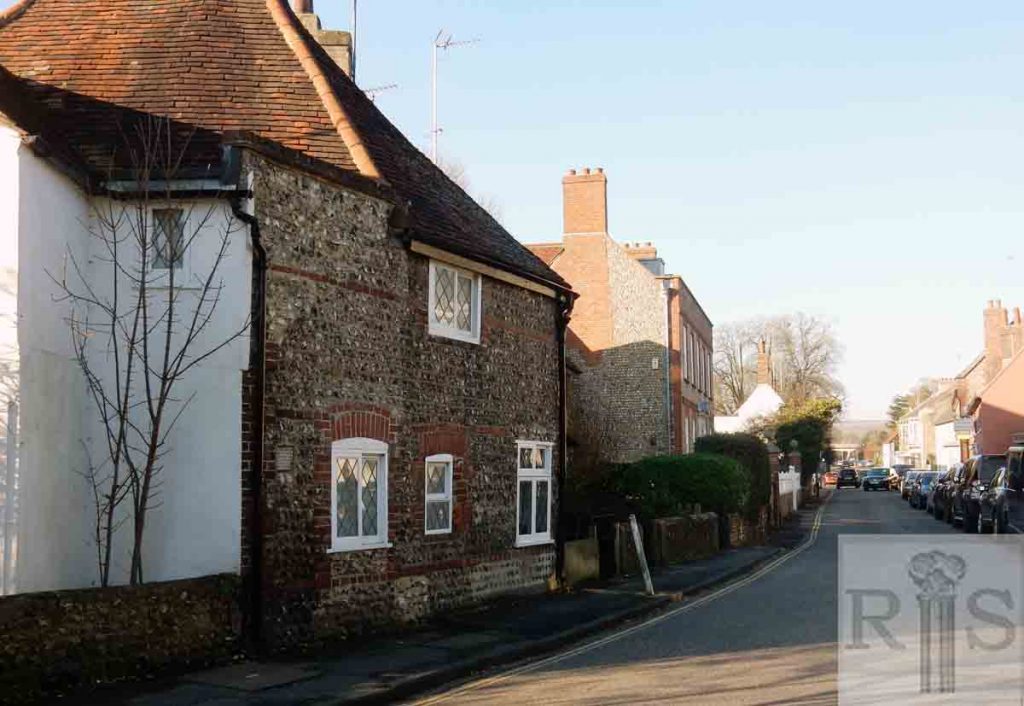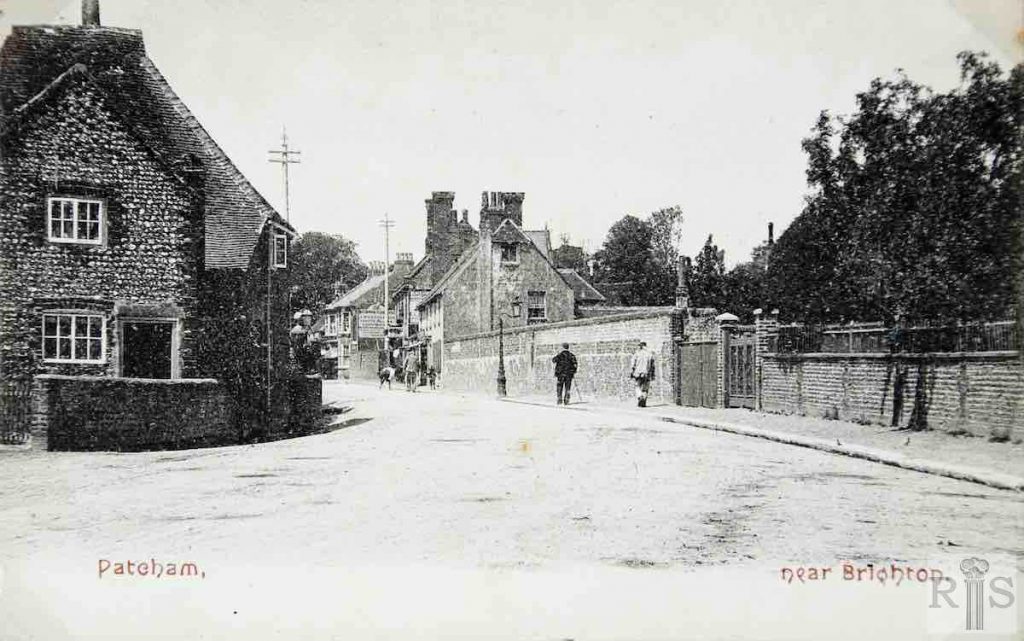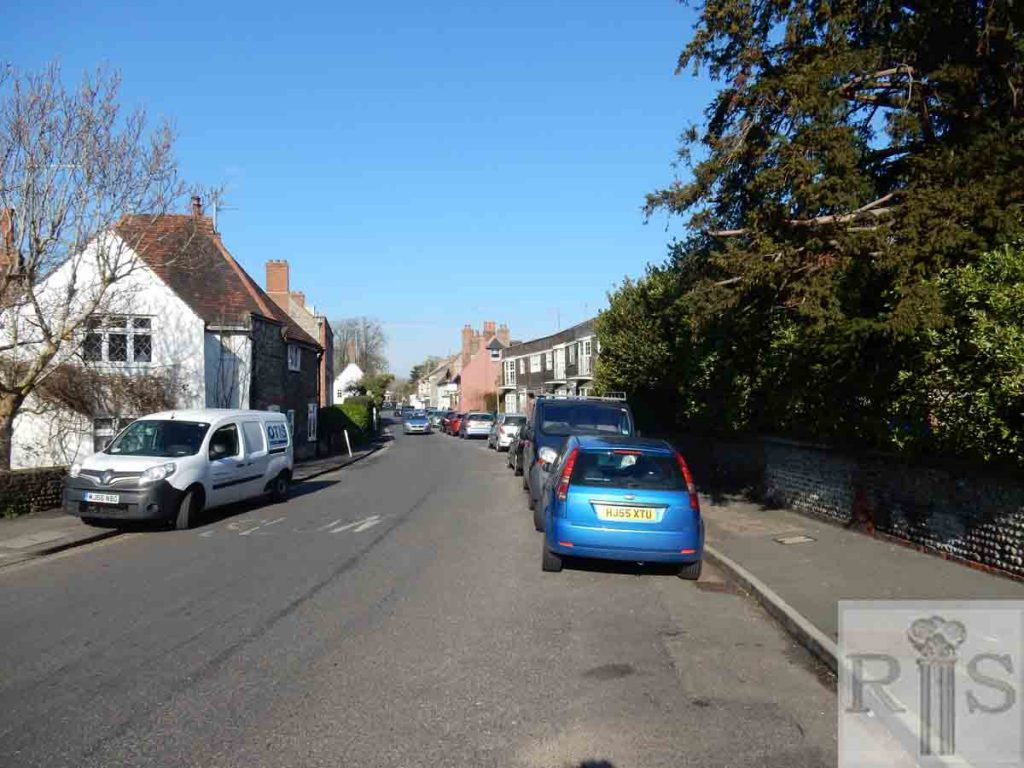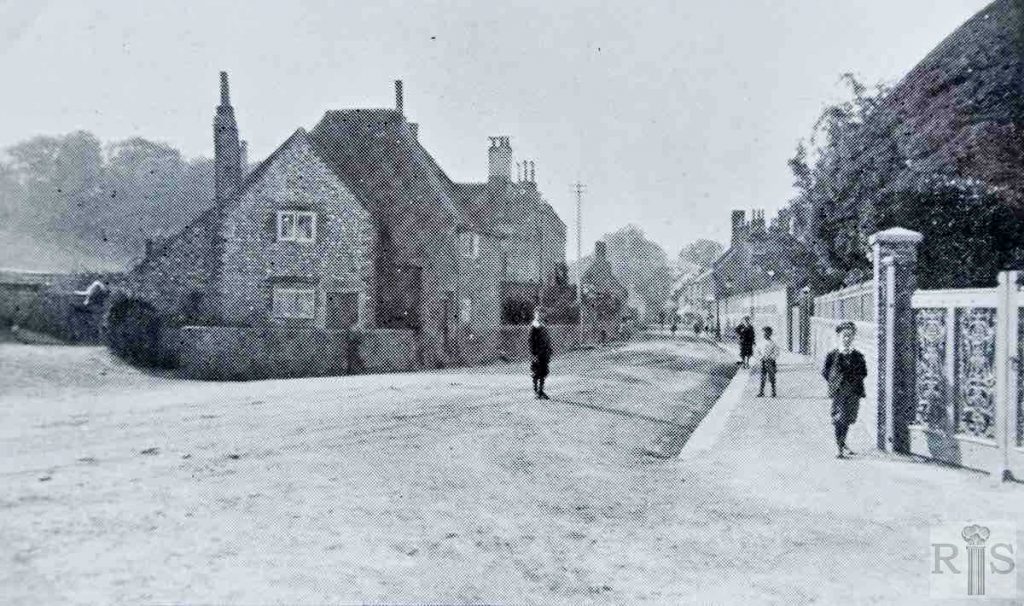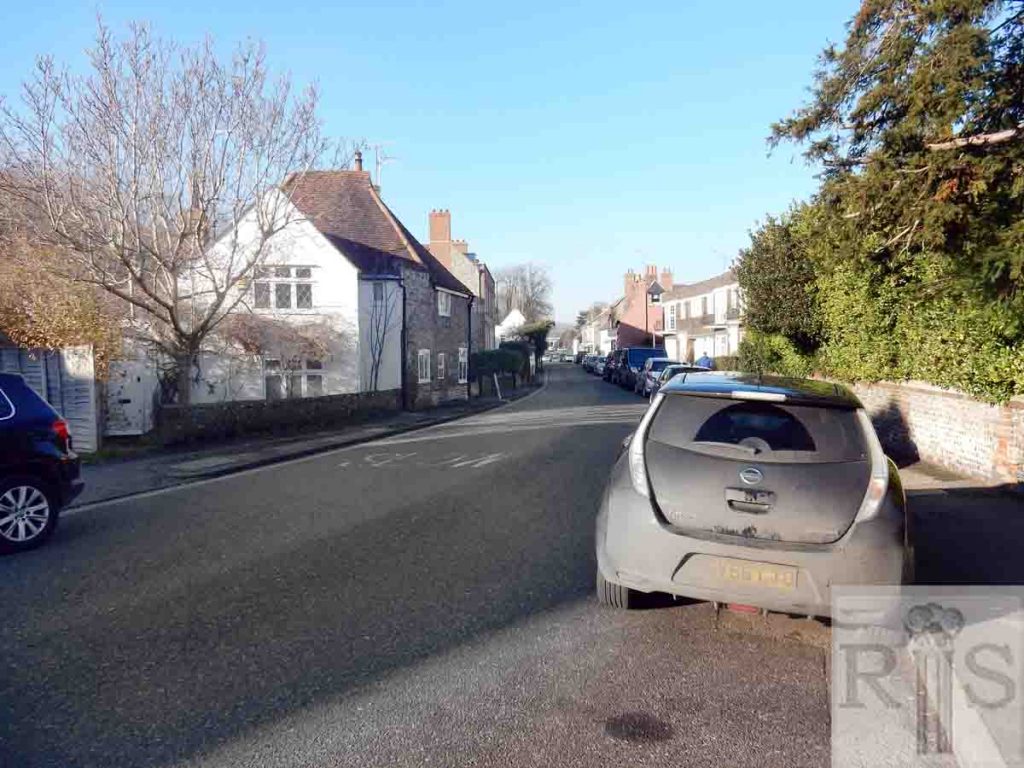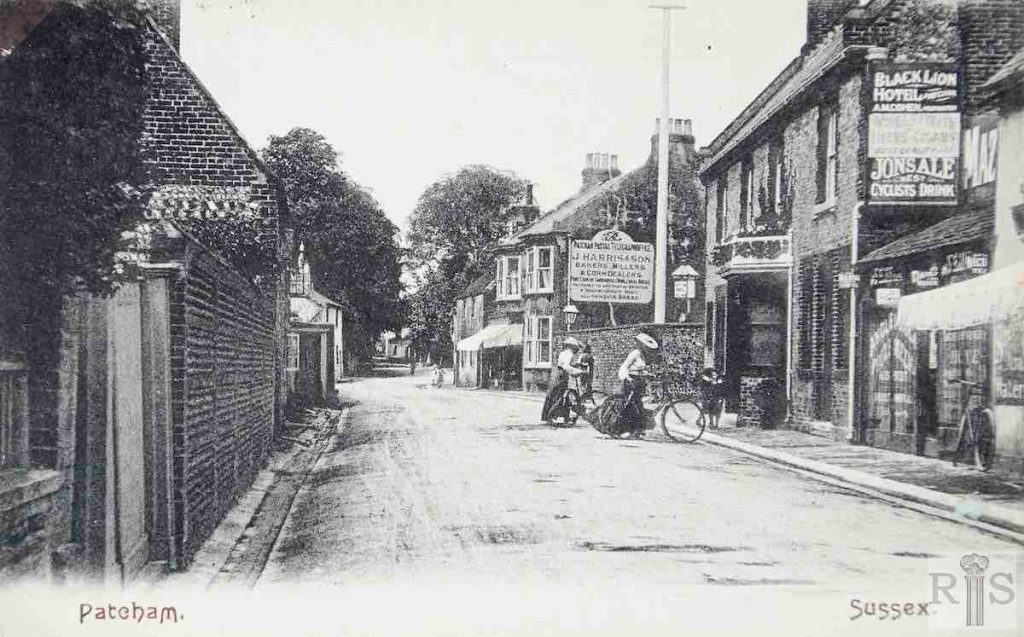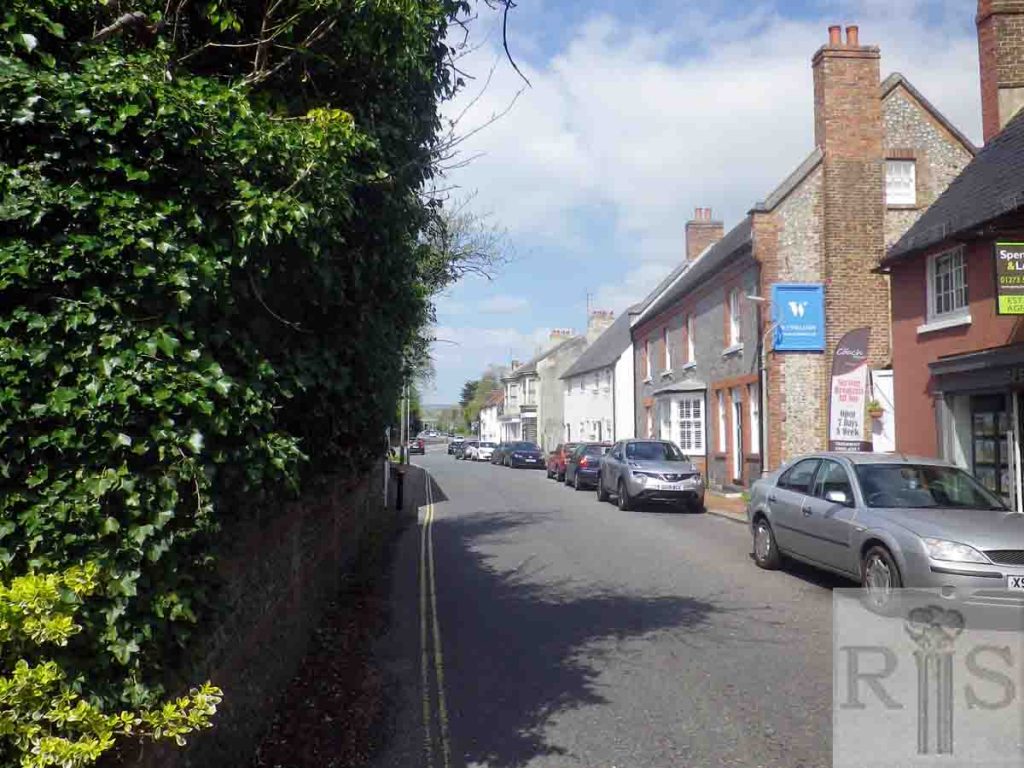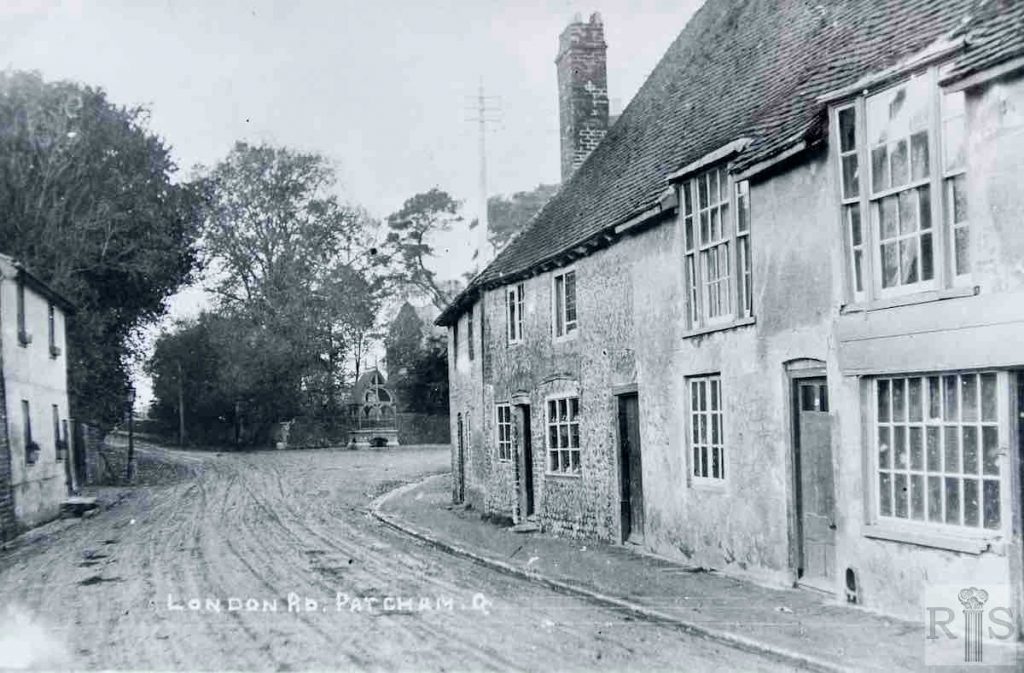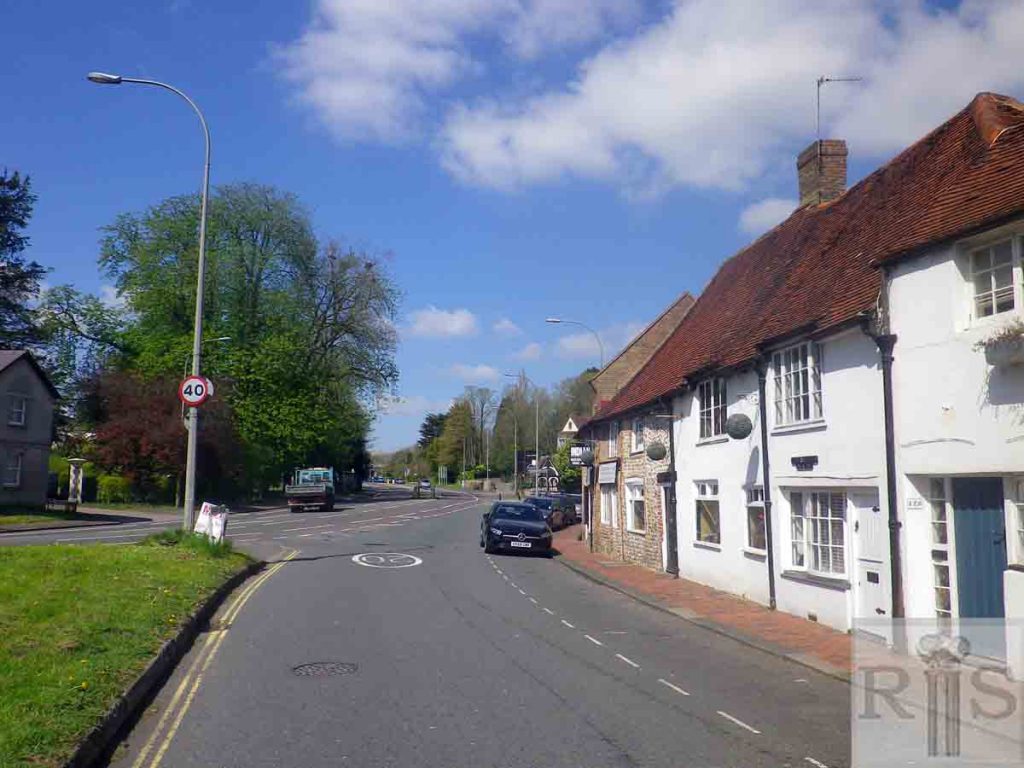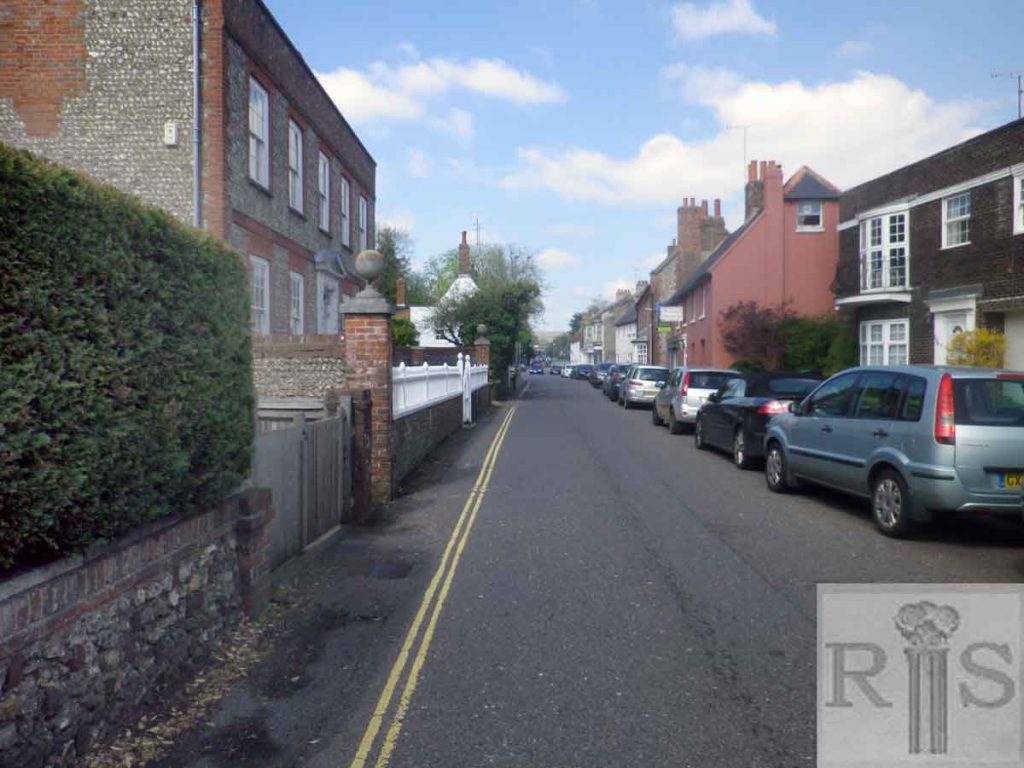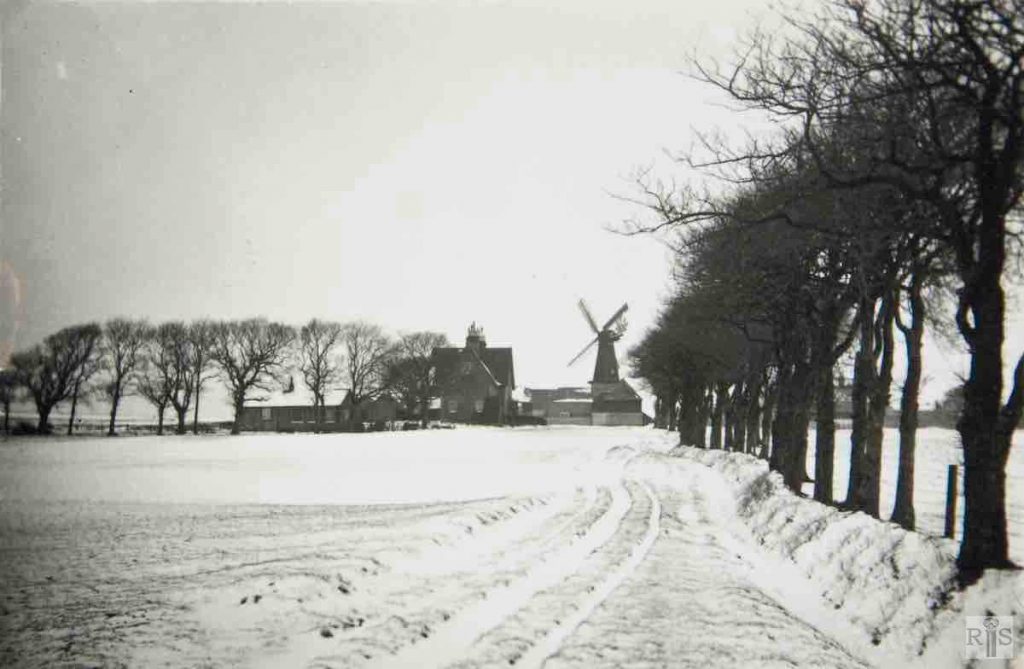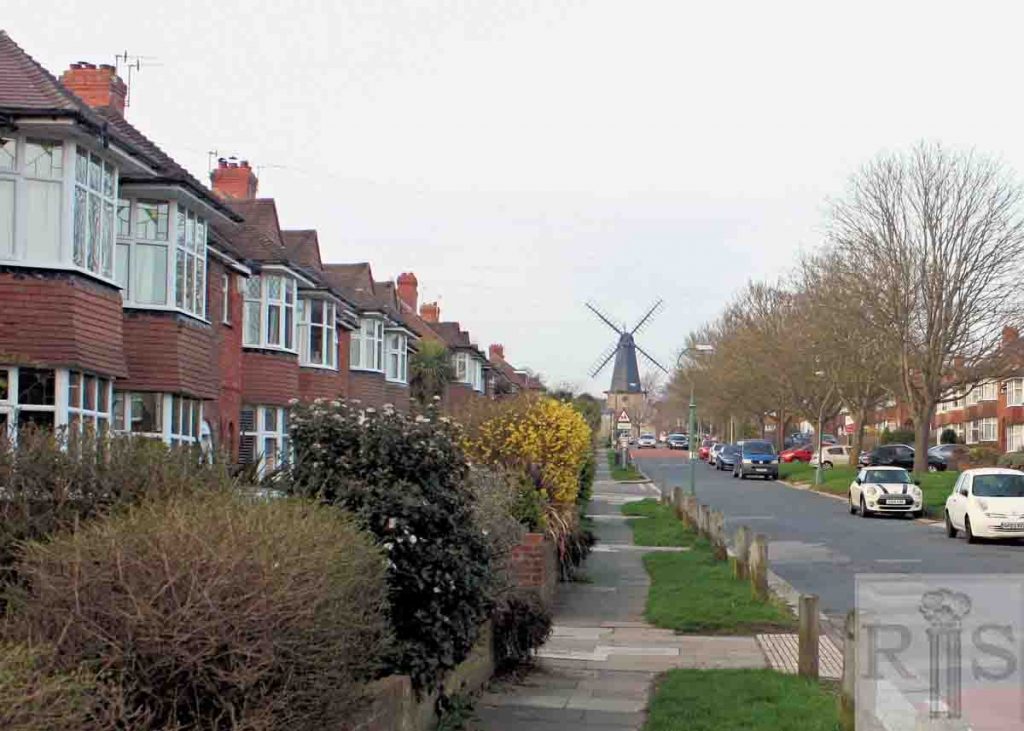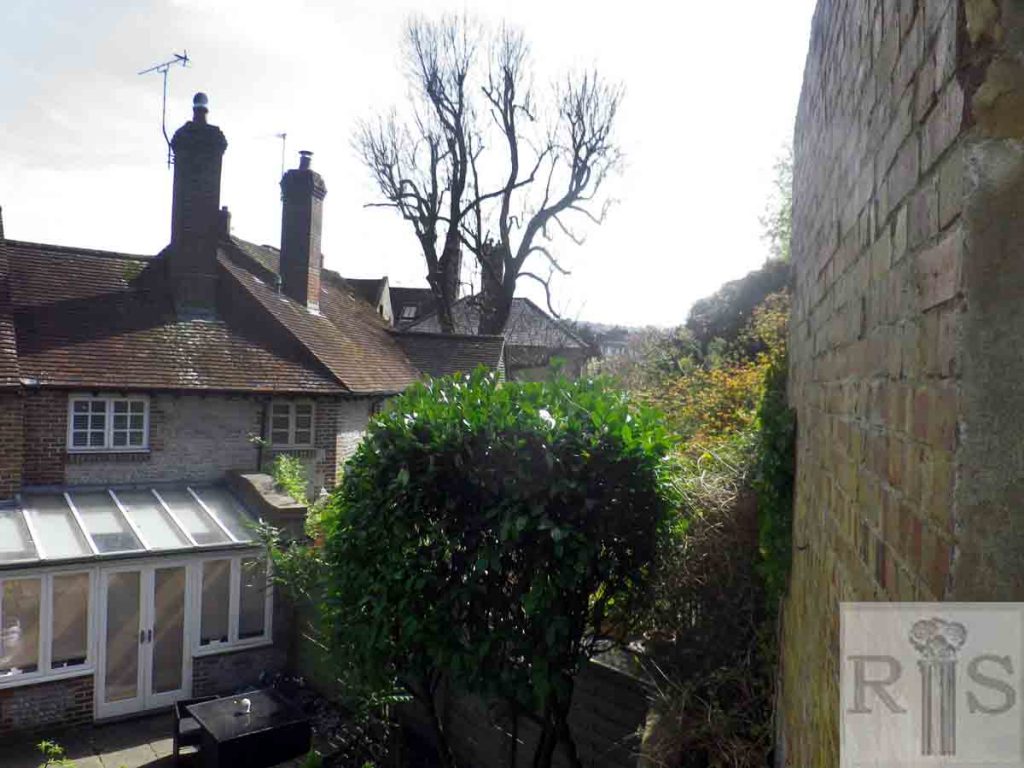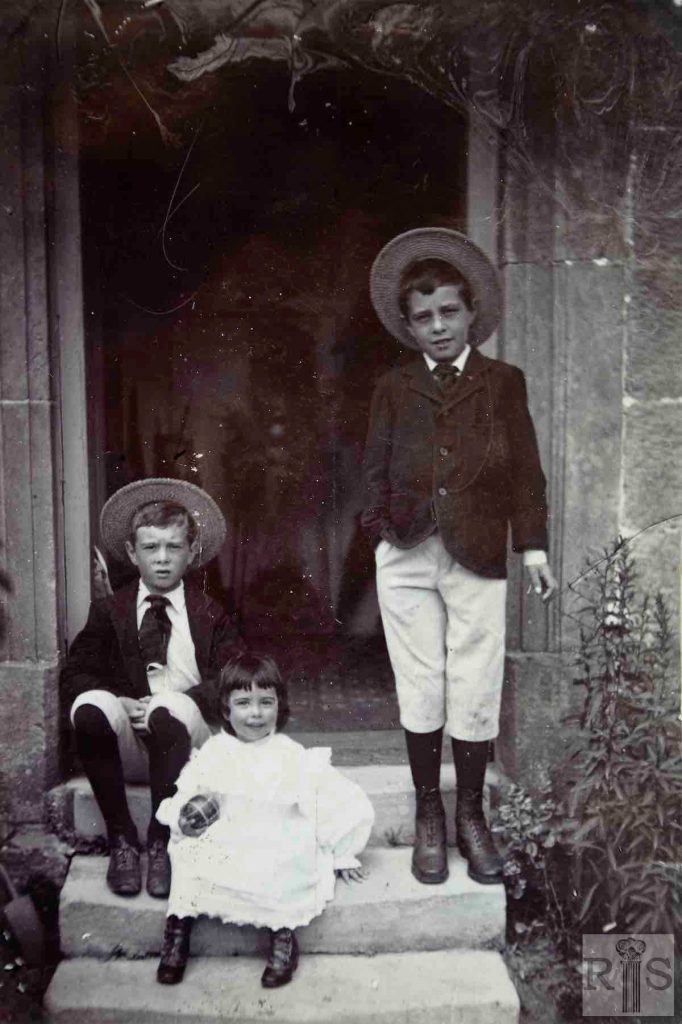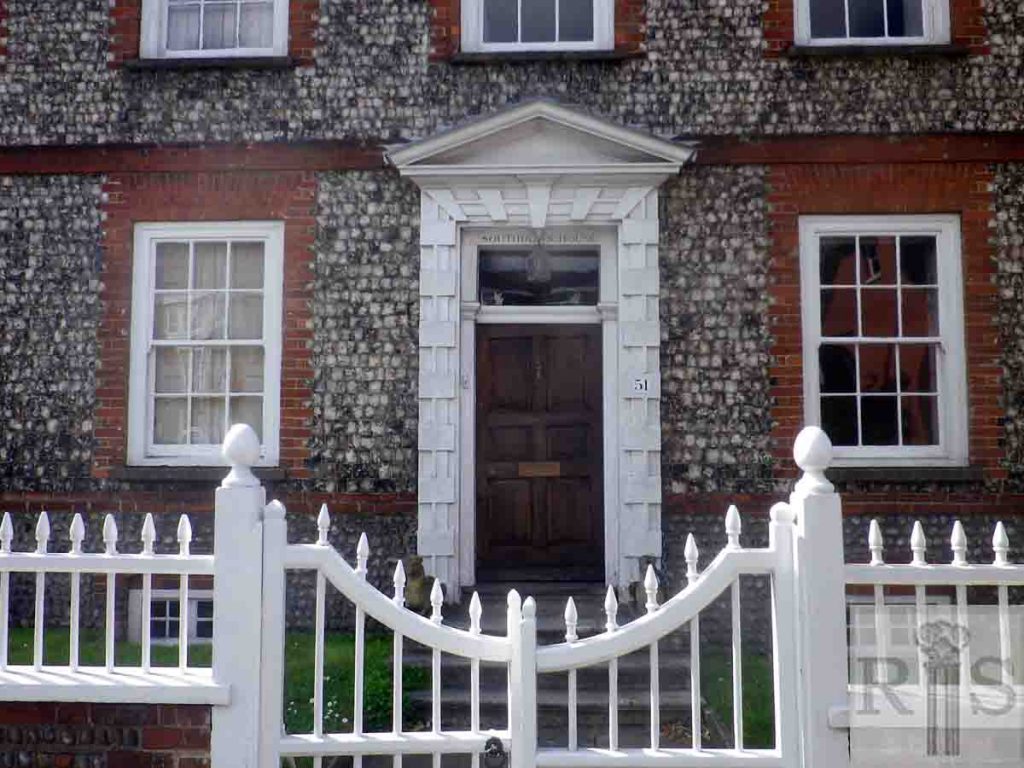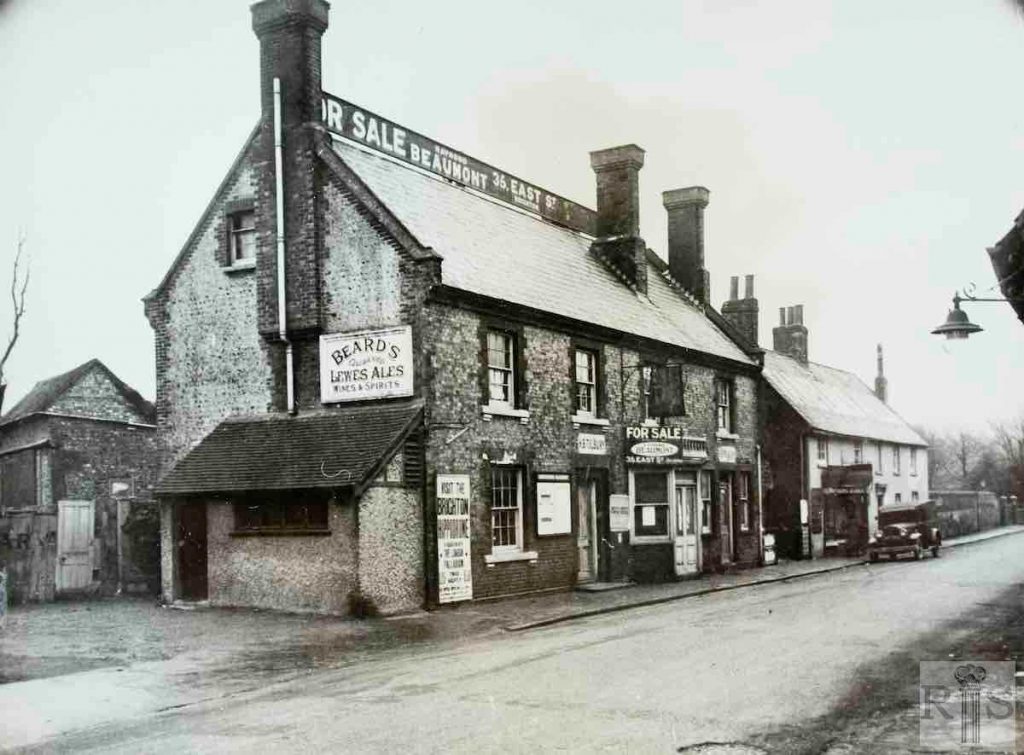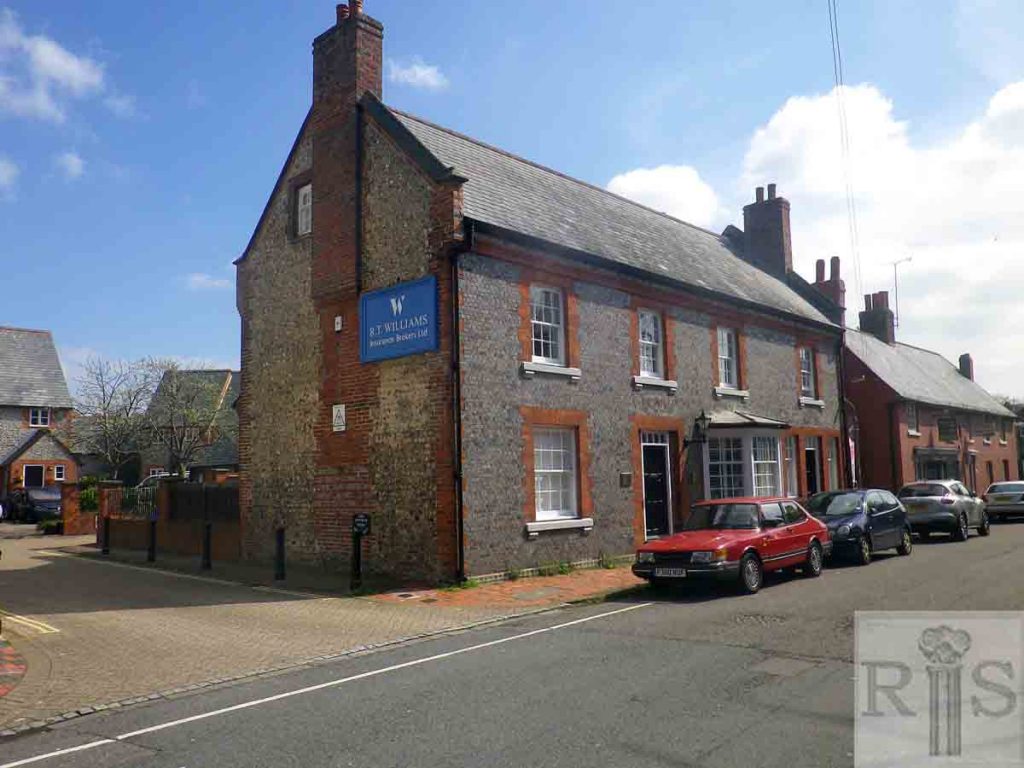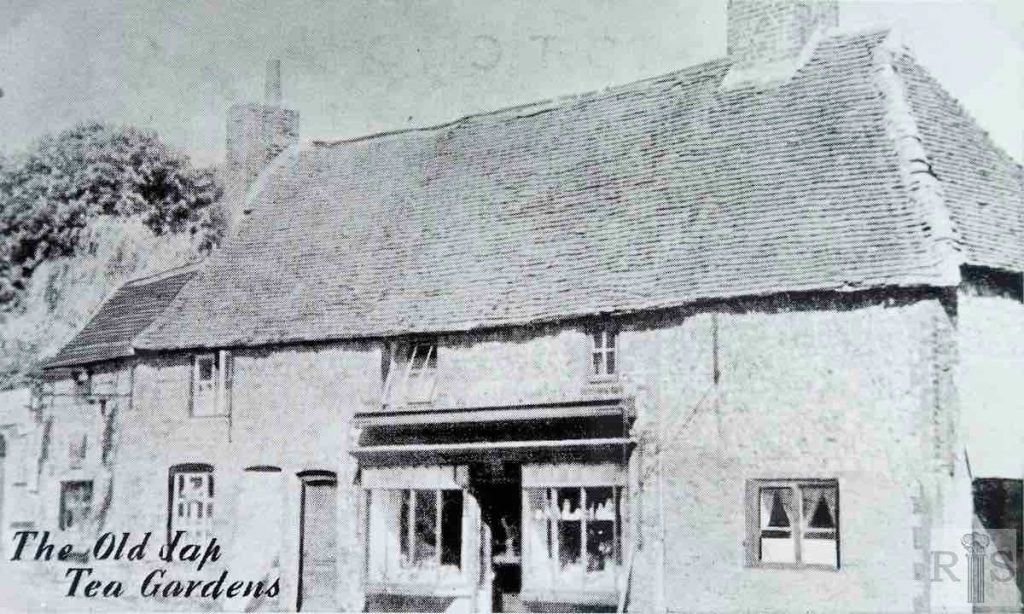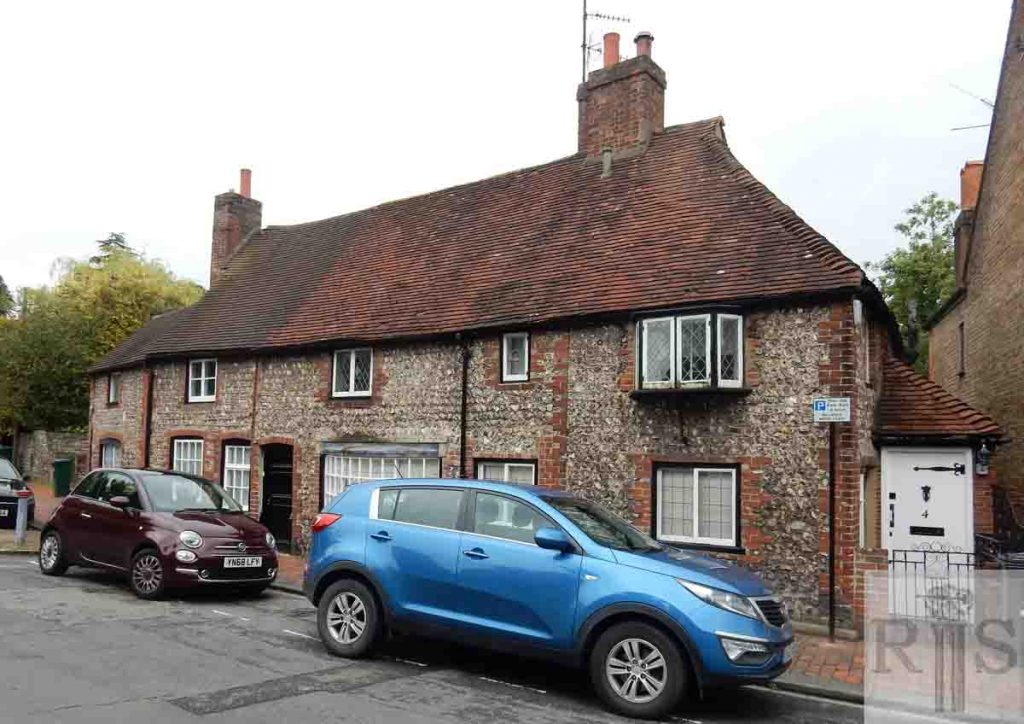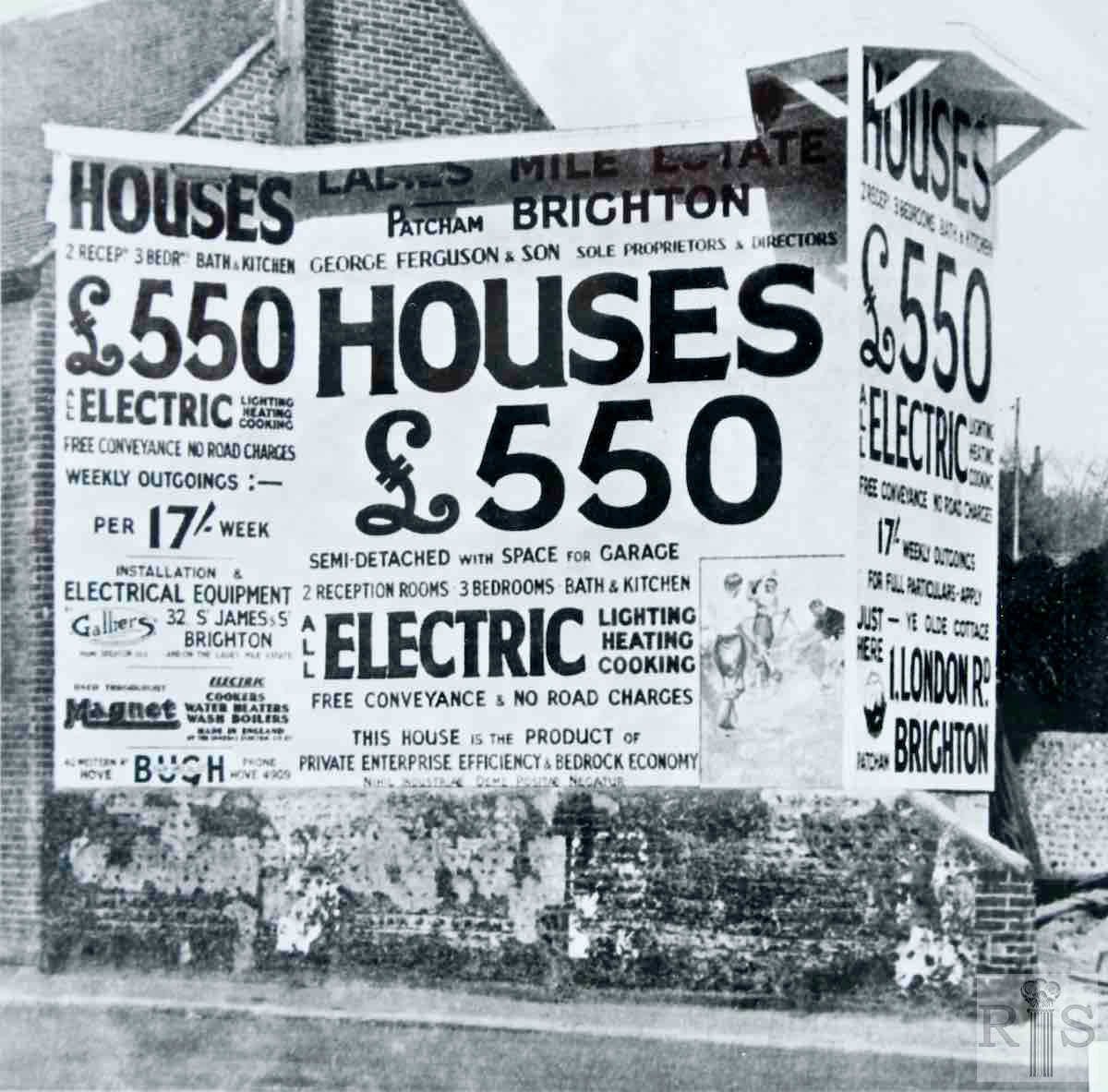
James Gray: This photograph of Old London Road was probably taken a year later (than jgc_35_014), in winter 1930, because the Old Black Lion has a ‘Sold’ notice in its window, and the freehold of this old house had been sold by the brewers, Beards of Lewes, a few months after the new hotel was opened. jgc_35_015
James Gray: The advertisement hoarding adjoined 1 Church Hill at the entrance to the Square, but a new Estate Agents Office was built here in the 1960s. jgc_35_027
2019: This site is at 134 Old London Road, on the corner of Church Hill, as James Gray mentions. The estate agency built in the 1960s was an Eric Marchant office for many years. (Photographer: Chris Nichols)
James Gray: Little changed today from its appearance here in 1907. Some extensions; the wooden fence has gone. jgc_35_035
2019: This house, which was known as Meadowside for many years, is number 11 Old London Road, next to the old Patcham Village school. The 1958 Directory is the first directory to use numbers rather than the house names.
James Gray: Seen here in 1923, the forge had been in existence for some generations. Soon afterwards it was closed but the building was used as a garage. Finally, about 1957, it was demolished and the present Forge Garage was built on the site. jgc_35_036
2020: The forge was replaced by the garage in 1957, when it was known as the Forge Garage. It is currently known as Patcham Garage. (Photographer: Chris Nichols)
James Gray: 1 May 1960. At this time the front lawn was being prepared for the later building of the bungalow, No 16, which now partially hides the old house from view. jgc_35_037
2019: James Gray notes that the bungalow was to be No 16, though Ashburnham was No 26 in the Directories in the 1950s.
James Gray: When these photographs were taken on 8 May 1974, the boarded-up windows suggested possible demolition of this tiny school building. When this opened on 10 May 1877, Patcham was just a village, on the London Road, but some miles from Brighton. The building was adequate for the few children, but later in 1902 the extension seen at the back was added, making room for 180 children.
James Gray: Building of the shops and flats at the junction of London Road and Ladies Mile Road, in 1933. jgc_35_043
2019: The small parade of shops in the centre of the earlier image are still called The Elms but has been extended on both sides.
James Gray: A photograph looking north-eastwards across the village taken from approximately the same spot as that seen on the previous page. About forty years divide them as this one dates from 1960. However many of the cottages in Old London Road are clearly seen in both photographs, the chief difference being the removal of one long flint wall, nearest to the road, and the lowering of the other,
James Gray: The village street looking south in 1900. jgc_35_049
James Gray: Another of the many views of the Old London Road running through the Village. This one dates from August 1908. jgc_35_070
2019: The old flint wall on the west (right) side of the road and the house in foreground of the 1900 image were demolished in the early 1920s to build the bypass.
James Gray: At the time of these photographs Patcham was just a village, 3 miles from Brighton. London Road, running straight through the village, had to carry all the Brighton traffic until the bypass was constructed in 1926. In this photograph, looking south, a glimpse can be seen of Mill Cottages. jgc_35_050
James Gray: At the time of these photographs Patcham was just a village, 3 miles from Brighton. London Road, running straight through the village, had to carry all the Brighton traffic until the bypass was constructed in 1926. In this photograph, the cottage on the left beyond the lorry was removed to make way for the by-pass. jgc_35_051
James Gray: Old London Road, Church Hill and the Jubilee Fountain, period 1910-20. jgc_35_056
2020: The road layout and most buildings are similar in both images. The house to the left (west) of the picture has been changed and a row of neo-Georgian modern houses has been built on the other side of the road where the high wall was in the earlier image.
James Gray: The entrance to Patcham village from the south in 1907, long before the bypass road had even been thought of. jgc_35_058
2019: The houses on the western side of the road are largely unchanged from the 1907 image – however the road now seems to continue further south along Old London Road.
James Gray: One of four photographs of the main street in the village. jgc_35_062
2019: Buildings on both sides of road are basically the same as c1904 although there has been some infilling with imitation Georgian houses built in the 1980s on the east (right) side of the road. (Photographer: Chris Nichols)
James Gray: One of four photographs of the main street in the village. jgc_35_063
2019: The scene is very similar with the drinking trough, built for the 1897 Jubilee, still in place. Houses on the right (east) still stand but the one on the left was demolished for the construction of the Patcham bypass in 1920s. (Photographer: Chris Nichols)
James Gray: One of four photographs of the main street in the village. Another view, showing Southdown House. jgc_35_064
2019: Southdown House on the west (left) side and the building that was the Black Lion pub on the east (right) still dominate the image. The houses with dark coloured walls on the right were built in the 1990s. (Photographer: Chris Nichols)
James Gray: These two photographs (jgc_35_065 and jgc_35_066) taken in the extensive garden of this house on 17 October 1896, was on the occasion of the first meet of Brighton Harriers. Capt. Howard Welch, who lived in Southdown House is seen with the huntsman.
James Gray: This was at one time the main road from London to Brighton. The old Black Lion public house was opened about the middle of last century when two old cottages were reconstructed for this purpose. For many years it did a thriving business until in 1926 the alternative road bypassing Patcham Village was constructed.
James Gray: The Jap Tea Gardens existed for a long time; previously the premises were known as the Brew House, where small beer was brewed. These old houses were transformed during the 1950s. jgc_35_125
2020: The tea rooms are long gone and the building is now a private house.
